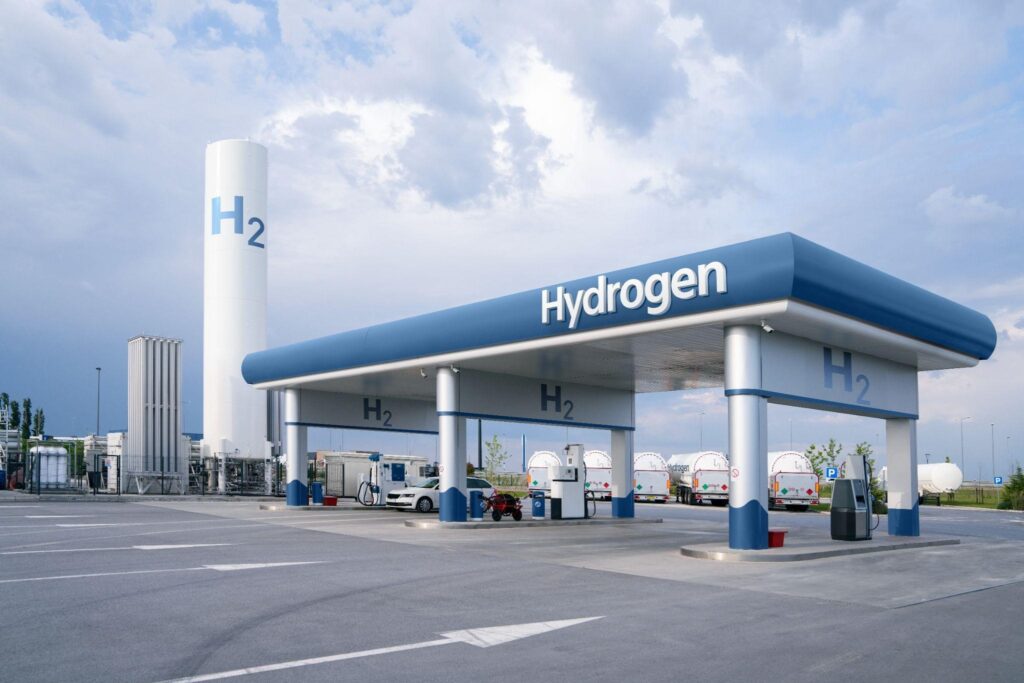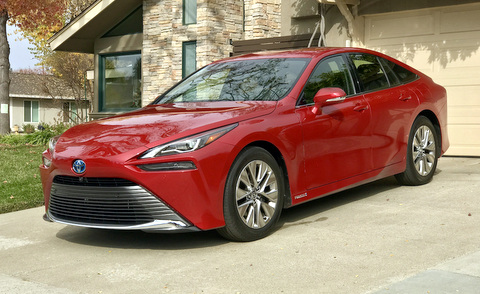Prospects and Challenges in 2024
Combining the environmental benefits of electric vehicles (EVs) with the long-range and rapid refueling of traditional gasoline vehicles, hydrogen fuel cell electric vehicles (FCEVs) are becoming a compelling option for eco-minded car owners.
Without question, FCEVs have the potential for broader adoption. However, a handful of market-based and technological hurdles, such as high car repair costs and lack refueling stations, still stand in the way.
So, with that in mind, let’s explore the future of hydrogen fuel cell vehicles and break down everything you need to know.
How Do FCEVs Work?
FCEVs use hydrogen—a lightweight, abundantly available gas—to generate the electricity through a chemical reaction and power the electric motors that move the car. These vehicles store the hydrogen in strong, high-pressure tanks, allowing them to achieve ranges comparable to conventional gasoline vehicles on a full tank.
When an FCEV’s system activates, hydrogen from these tanks is released into the fuel cell stack. Here, the process splits the hydrogen into hydrogen ions and electrons.
The hydrogen ions combine with oxygen to create water vapor, which the vehicle emits as harmless exhaust. The electrons move through an external circuit to generate electricity and power the electric motor.

Where FCEVs Stand in 2024
In 2024, FCEVs find themselves at a promising crossroads, buoyed by significant political and financial support.
As part of the 2022 Bipartisan Infrastructure Law, the U.S. government is infusing $9.5 billion into clean hydrogen initiatives, including the creation of hydrogen production hubs that utilize renewable energy and electrolysis. Meanwhile, the Inflation Reduction Act aims to make hydrogen more affordable and includes significant investments in new hydrogen fueling stations.
This legislative support is matched by a surge in corporate interest, with major fossil fuel companies investing heavily in the potential of a hydrogen-powered future.
On a broader level, recent supply chain statistics state that 48% of companies are under increasing pressure to improve sustainability in the supply chain—a trend that can potentially boost all eco-friendly technologies.
Still, FCEVs face major hurdles, particularly when it comes to the fueling infrastructure. The existing U.S. energy grid supports an extensive network of EV charging stations, whereas hydrogen stations are less common. This limits FCEV use primarily to a handful of areas in California and Canada.
Top Selling Points of FCEVs
FCEVs offer several compelling advantages. One of the most significant selling points is their environmental impact. FCEVs produce zero emissions at the point of use—only water vapor is released.
This makes them a clean alternative to traditional fossil fuel-powered vehicles and even battery electric vehicles (BEVs), which can have significant environmental costs associated with battery production and disposal.
Additionally, FCEVs boast superior range and refueling capabilities compared to BEVs. While electric cars often require several hours to charge fully, hydrogen cars can be refueled in just a few minutes, similar to traditional gas vehicles. This makes FCEVs particularly attractive for long-distance travel and heavy-duty applications where downtime for charging is impractical.
Top Challenges Limiting FCEV Growth
Despite the promising prospects of hydrogen fuel cell vehicles, several challenges remain that could impede their widespread adoption.
The lack of a robust hydrogen refueling infrastructure, particularly in the U.S. and Canada, poses a major obstacle. The high costs associated with producing and installing these fueling stations contribute to these infrastructural constraints.

Another challenge is the production cost of hydrogen fuel cells, which is higher than the cost of making traditional combustion engines or even battery packs in EVs. This cost barrier often translates into higher retail prices for FCEVs, potentially deterring average consumers. Finally, the retail cost of high-quality hydrogen fuel is currently quite high, which will deter many potential purchasers.
Safety will always remain a top concern for automakers. So, lingering concerns over FCEV safety—stemming from the highly flammable nature of hydrogen—might also slow consumer acceptance despite the rigorous safety standards in place to mitigate such risks.
FCEV Market Trends and Looking Ahead
The FCEV market is set to expand from $1.51 billion USD in 2022 to an estimated $2.88 billion USD by 2032, according to Polaris Market Research & Consulting. This projected growth stems primarily from rising demands for zero-emission vehicles and supportive government policies that incentivize FCEV adoption through significant investments in hydrogen infrastructure.
The average consumer can already see FCEVs playing a bigger role in the auto world—industry players such as Hyundai, Toyota, Daimler AG and others are driving the market forward by investing in new technologies and expanding their light-duty and heavy-duty FCEV offerings. In 2024 and beyond, we can expect hydrogen fuel cell vehicles to begin to play a larger role in our daily lives.
